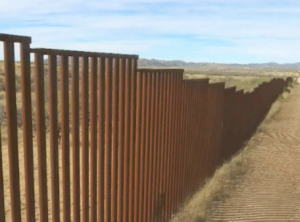Trump’s wall could be ultimate eminent domain showing in Texas history
You’ve probably heard more than once about Trump’s plans for a wall to enhance border control. His plan to build a wall along the Mexico and the United States border, however, means that the government would need to seize more than a thousand miles of land from Texans. In order for that wall to be built, private property will need to be seized. 
Eminent domain was used successfully by the U.S. federal government in 2013, where they were able to acquire the land rights to build a fence. This fence now runs along Dr. Eloisa G. Tamez’s ancestral home, which was situated on land given to her family by the King of Spain in 1767. Since her house and property rested on the U.S. – Mexican border, the Department of Homeland Security appropriated it so a border wall could be built, under a federal law that was enacted during the administration of George W. Bush. If Trump’s wall is built, this would be the case for thousands of Texans which reside or have property along the border.
It seems that President Trump wants to build 1,000 miles of a wall, as he would be incorporating natural boundaries and existing walls to the 2,000-mile border. 700 miles of a fence have already been built by the passing of the Secure Fence Act in 2006.
During the 2006 building of this wall, the Department of Homeland Security ran into problems. They stated that “real estate issues” were causing severe delays. This makes sense as court litigation can sometimes take years. For example, Dr. Tamez’s case took seven years to be resolved.
Around 30% of the border is comprised of federal and tribal lands, with the remaining 70% belonging to private and state-owned lands, mostly located in Texas. Therefore, if Trump were to succeed in building that wall, thousands of homeowners will have their property taken from them, destroyed or walled off.
The construction of the “Secure Fence” in 2008 hit a few snags, as 370 miles of fencing required purchase negotiation and voluntary sales of around 500 landowners. These negotiations kept on breaking down, and it was a time-consuming process. So time consuming that it took more than a decade to litigate all eminent domain cases. In the case of Trump’s wall, the litigation of all the new eminent domain procedures would take at least that amount of time, especially as the new parts of the wall would mostly be built on private and state-owned lands.
Trump has extensive experience in using eminent domain to gain benefit as a private citizen, and he now intends, as President, to continue utilizing this resource to expropriate land from Texan property owners.
Eminent domain is considered in the Constitution. However, under the fifth amendment, the federal government is responsible for providing adequate compensation to all property owners whose land is taken by the government. This would mean a hefty expense load for taxpayers. 
What also needs to be taken into consideration is that it can be very inappropriate to take land off thousands of people. Some of this land would need to be taken from Native American burial grounds, which have already been affected by the construction of the Secure Fence.
Detractors of this law argue that building this wall and putting eminent domain into procedure will only the only outcome of lengthy court cases and condemnation procedures while entailing a high cost for homeowners and taxpayers.
